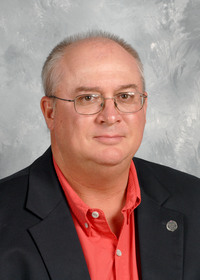Prescribed Burning for Pasture Management
For over 10,000 years, burning has been used to rejuvenate grasslands. In the southern United States, this practice is commonly employed to manage excess residue in pastures and hay fields. Fire effectively controls brush and woody plant encroachment without damaging grasses, thanks to their deep root systems.
Forage producers frequently use burning to stimulate vegetative growth in unproductive or weed-infested pastures. It is a cost-effective and labor-efficient way to remove unwanted residues or vegetation before forage growth resumes. However, burning is most effective when integrated with rotational grazing. Combining prescribed burning with appropriate stocking rates and rest periods allows desirable vegetation to thrive while reducing the spread of invasive plants.
Burning serves various purposes: removing excess vegetation, boosting plant productivity by enhancing photosynthesis, controlling weeds and insects, and mitigating diseases from dead biomass. It also impacts soil conditions, altering temperature, moisture, and short-term nutrient availability, particularly nitrogen mineralization.
Despite these benefits, burning can have long-term detrimental effects if mismanaged. These include reduced soil organic matter and nutrient levels, decreased water-holding capacity, soil erosion, and harm to certain vegetation, especially shallow-rooted grasses. Heavy rains after burning may wash beneficial ash and soil out of the field.
Prescribed burns must be carefully planned to achieve specific goals under the right conditions. This involves proper equipment, a trained crew, and execution at the appropriate time of year. When done correctly, burning can be a powerful tool for pasture management and vegetation control.
- Define the area to be burned. This could be achieved by using an aerial photo or map of the pasture or property to be burned. It is important to define the conditions of the properties adjacent to the area to be burned, and to notify the surrounding landowners. Identify the location of fences, gates, power lines, property boundaries, streams, wetlands, roads, trails, nearby buildings and working cattle facilities, etc. Walking the property to be burned is important to identify areas of heavy fuel loads such as matted grass, dead trees, or dry pine trees that could intensify the blaze.
- Determine the best time to burn. Timing of the burn is a critical element for obtaining the desired response. The safety and effectiveness of a prescribed burn can vary according to the region and climatic conditions. Most perennial pastures in Mississippi can be burned from mid-January to early March before green-up. During this time, fire will consume the dead grass without harming the stand. Summer burning is not recommended because of the high temperatures, humidity, and the active growth of perennial grasses. The only potential exception here is when hardwoods like sweetgum and green ash have invaded a field or pasture. Sometimes a summer burn is the most affordable and efficient way to kill the hardwood saplings. Burning should be carried out every 3 to 5 years when an excessive amount of dry material is accumulated on the pasture from the previous years, or weeds have infested over 50 percent of the stand. Burning too early may allow weeds to regrow more rapidly, increasing competition at the time of grass green-up. Early burning will also cause perennial grasses such as bahiagrass and bermudagrass to be more susceptible to late freezes. Burning too late may damage grasses that have begun to green up and reduce the stand.
- Create firebreaks. Firebreaks should allow for the containment of fire within the burn area. Although ponds, plowed fields, and roads could be used as firebreaks, you probably will need to develop some firebreaks that are wide enough to stop the fire. Depending on the type of vegetation in the pasture, the biomass load, and the topography of the terrain, firebreaks could be created by mowing, plowing, disking, establishing a wet line, or backfiring.
- Obtain the necessary workforce. The number of people needed varies with the size and complexity of a burn. Generally, three to four people are necessary for each fireline—one to ignite the fire, one or two to control the fireline, and one to extinguish all smoldering debris such as logs or stumps. If you are burning close to a highway, it is highly advisable to have a road patrol and signs posted in case smoke blows across the highway and impairs the visibility of drivers.
- Use proper equipment. Drip torches are the most efficient tools to ignite a uniform fireline. Flares, propane torches, or matches could work, but these are not as efficient. Crews should have a high-pressure sprayer capable of outputting at least 5 to 10 gallons of water per minute. If burning small pastures that have extremely safe boundaries, a low-pressure, low-volume cattle or field crop sprayer might work. Always make sure there is enough water nearby to refill pumps and sprayers. Backpack sprayers, wet sacks, bow rakes, broom rakes, and swatters could be used to smother fires afterward. Although hand signals could be used as communication in small burns, having band radios or cell phones could make communication more effective. It is also advisable to have farm tractors, four-wheel ATVs, or vehicles available to transport crew, equipment, or water when necessary.
- Wear proper clothing. Crew members should wear clothing made of natural materials such as cotton, leather boots, and leather gloves. Do not wear torn clothing, and avoid any synthetic material such as polyester, plastic, or rubber (rubber boots are acceptable in wet areas). These materials will melt and stick to the skin if they catch fire. Wear goggles and face masks (dust or painting masks will work). Hard hats are advisable if working around trees, brush, or power lines.
- Obtain a permit and notify the necessary authorities. Any prescribed burn in Mississippi requires a permit in advance from the Mississippi Forestry Commission (see summary of requirements and regulations, page 3). Contact your county MFC office for permit information. If weather conditions are unfavorable for a burn, the permit will not be granted. You must notify the proper authorities (fire department and law enforcement officials, forestry office) and your neighbors before the burn day. Having a cell phone within reach is recommended to request help quickly in case of an emergency. It is also important to have a contingency plan in case the wind shifts, the fire gets out of control, someone is injured, equipment breaks down, or smoke creates severe visibility problems.
Once you have developed a plan and obtained the proper permits, it is time to prepare for the burning date. Follow these guidelines:
- Observe the weather conditions. It is important to monitor the weather conditions several days ahead of the designated date for burning. It could make or break a prescribed burn. Weather conditions must meet several specific parameters such as wind speed and direction, relative humidity, and air temperature. It is very important to pay attention to forecast prediction changes in wind direction. Wind speed should be less than 12 to 15 miles per hour; humidity should be at least 25 percent and ideally between 30 and 55 percent; and temperature should be 80°F or lower. If these conditions are not met, be prepared to reschedule the burn. Do not take chances. Because there are so few opportunities in a year, try to burn as much as possible at a single time if the conditions are favorable. This is also more cost-effective. Do not burn at night because of temperature inversion, which occurs when a layer of warm air is sitting over a layer of cold air. Inversions are common during the night and early morning when cool air is present in the atmosphere. Damp conditions produce more harmful smoke emissions. Cooler temperatures and calmer conditions often cause smoke retention or poor dispersal.
- Ignite the fire. The day of the fire, go over the burn plan with the crew, and check the equipment to make sure that everything is working properly. Before igniting a pasture, we recommend igniting a small test fire in the downwind corner of the burn site to observe the fire behavior and the crew’s reaction and performance. This will provide time to correct any issues before beginning the main burn. Once the test fire is completed, start the actual burn by igniting a backfire in the downwind corner. Because a backfire moves against the wind, it will be effective at scorching and killing woody brush and weeds.
Setting a backfire. Beginning a backfire in late afternoon or early evening usually allows a slow ignition of backfire lines because humidity is at its lowest point and winds are calmest. Besides controlling the flames, it is also important to control the smoke. Try to avoid burning along roadways where wind will blow toward the road, making it hard for drivers to see.
It is always recommended to lengthen the backfire by igniting short segments of fireline along the boundary of the burn side that is downwind. Never ignite more fire than the crew can easily control. The person igniting the fire should pay close attention to wind speed and direction, as well as the location of the crew. Check back along the fireline to make sure that fire has not re-ignited or crossed the firebreak.
Setting a flank and headfire. Continue working along the perimeter of the burn area, igniting the flanks. A flankfire moves at right angles to the wind and burns more quickly than a backfire. Be cautious because with a wind shift, a flankfire could turn into a fast-burning headfire. The backfires and flankfires should create a firebreak, or burned ground, around most of the perimeter of the burned pasture. Then you can ignite the headfire. Keep in mind that headfires could spread quickly, have long flames, and create the most heat. Because fire escapes usually happen when igniting a headfire, it is recommended that your firebreak be two times wider than the average flame height before igniting a headfire. - Smother the fire and evaluate the results. After a complete burn, you must make sure the fire is completely out before you leave the premises. One smoldering ember could re-ignite a fire. Check the perimeter of the burned pasture several times. If burning in late afternoon, it might be a good idea to wait until dark when it is easier to see any hot spots. Cut down and extinguish any trees burning near the firebreak. Drench all smoldering debris and hot coals with water. Water mixed with detergent or other surfactants might better penetrate smoldering debris. Do not bury smoldering debris because it can burn for a long time underground.
Once the work has been done, evaluating the entire the process (from planning to extinguishing) is one of the most important steps. This will ensure that the objectives were met and the operation was safe and efficient. Keep in mind that the burn plan should account for starting a fire and completely finishing it within daylight hours.
A properly planned and executed prescribed burn can be a very effective management tool for pastures or hay fields. Occasional burning of pastures can be an economical and effective management tool; however, repeated, long-term burning of pastures can have a permanent negative effect on soil quality and overall soil health. Repeated burning could cause long-term reduction in yields. Also, soils that are high in fertility may take several years to show the detrimental effects of burning.
Remember: always burn against the wind for better fire control; burn before rain for hot spot control and to incorporate the ash into the ground; and burn early so you can finish the burn before nightfall. Also, if fertilization might follow a burn, wait until after the burn to test your soil.
Prescribed burning can be dangerous if improperly or carelessly done. Even if a landowner obtains a fire permit, he/she is still liable for any damages or suppression costs that could occur as a result of the prescribed burn, including fire damages or problems created by smoke. Take precautions and appropriate measures before, during, and after burning to reduce any risks.
The benefits are many and the cost is relatively low, but never forget the danger and cost of poor planning. Get help before you burn. Contact your local forestry commission office and/or your local Extension office for more information on planning and executing a prescribed burn of a pasture or hay field. For more information related to fire bans, burn permits, and fire training, visit http://www.mfc.ms.gov.
Requirements and Recommendations
- A prescription must be notarized by the MFC at least one day before the burn.
- A burn prescription is a written plan that states the how, what, where, when, and why of burning.
- It should be site-specific.
- It should include the burning technique(s) to be used.
- Once notarized, the prescription becomes a legally binding document.
- A permit must be obtained from the MFC on the day of the burn.
- It must be in the public interest (e.g., the prescribed burn is for site preparation, hazard fuel reduction, wildlife management, or a similar purpose).
- Take time to scout the site and surrounding areas. Familiarize yourself with the topography, fuel types, species present, and smoke-sensitive areas, such as senior citizens’ homes, hospitals, highways, chicken houses, etc.
Requirements for MFC Burn Permit
- Transport wind speed must e approximately 8 mph (3.5 m/s).
- Mixing height must be approximately 1,750 feet (500 m).
These conditions will ensure that smoke rises and disperses. Even if you have a permit, you cannot legally burn unless all necessary conditions are met.
1992 Prescribed Burning Act and Liability
- Simple negligence: Pay actual damages and a fine of up to $150.
- Gross negligence: Pay actual damages, up to $500 fine, and serve up to 3 months in county jail (misdemeanor).
- A jury determines negligence.
- You do not have to be a certified prescribed burn manager to have a burn on your property. However, without a manager, your risk and liability increase dramatically. If something goes wrong, particularly with smoke management, you can be found in gross negligence.
- MFC foresters can immediately issue tickets if they are called to a site. The fine accounts for labor and materials used to correct the problem.
For more information, see The Legal Environment for Prescribed Burning in Mississippi (FWRC publication FO 351).
Fire Management Practices
Pre-burn. Identify the area to be burned, the burn objectives, and the site characteristics. Ensure that firebreaks have been established. Ensure that the necessary equipment and crew are ready. Notify the proper authorities and neighbors.
Burn day. Evaluate the conditions on the day of the burn, including wind speed, wind direction, relative humidity, air temperature, fuel load, fuel moisture, and test fire behavior.
Post-burn. Confirm that hotspots are extinguished, smoldering is complete, the final perimeter is checked, equipment is collected, and local officials are notified that the fire is out. Assess the success of the prescribed burn.


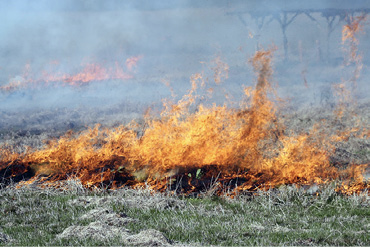
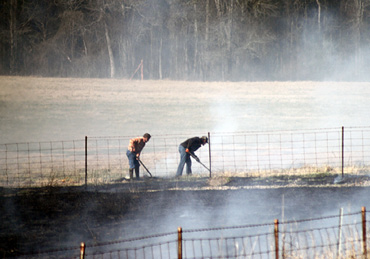
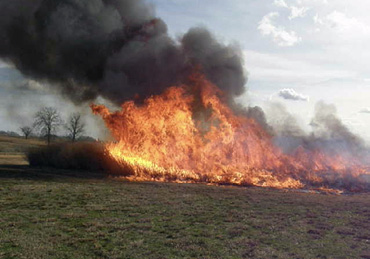
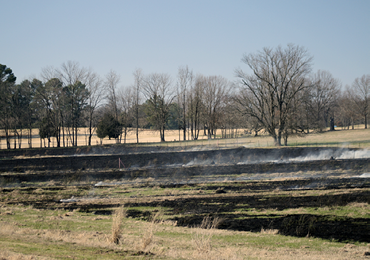
The information given here is for educational purposes only. References to commercial products, trade names, or suppliers are made with the understanding that no endorsement is implied and that no discrimination against other products or suppliers is intended.
Publication 2726 (POD-11-24)
By Rocky Lemus, PhD, Extension/Research Professor, Plant and Soil Sciences, and Jason Gordon, PhD, former Associate Extension Professor, Forestry.
The Mississippi State University Extension Service is working to ensure all web content is accessible to all users. If you need assistance accessing any of our content, please email the webteam or call 662-325-2262.



